Longevity Noodles Recipe By Celebrity Chef Amy Beh

Longevity Noodles Recipe By Celebrity Chef Amy Beh with Nitrigan Cast Iron Wok
Longevity is one of the most loved ideas in Chinese culture, alongside bliss, fortune, and success. Life span was accepted to be a definitive gift. In old times, rulers and rulers even had pills of eternality arranged for them.
During Chinese New Year, long noodles are eaten on all sides of China. “Life span noodles,” likewise introduced at birthday festivities, another child, a wedding, or a lunar new year feast, are never cut or broken by the cook, and assuming that they can be eaten without gnawing through the strands, it’s viewed as significantly more fortunate. Life span noodles are a significant part of this multitude of blissful occasions.
These noodles are generally served at Chinese New Year’s dining experiences. An antiquated Chinese conviction says that long noodles are the way into a long life so don’t cut the noodles as you eat them.
Since the longer the noodles, the more auspicious it will be, we will be using mee sua for this recipe. For obvious reasons, don’t go for the spaghetti!
Here’s how to make this longevity noodles:
Ingredients:

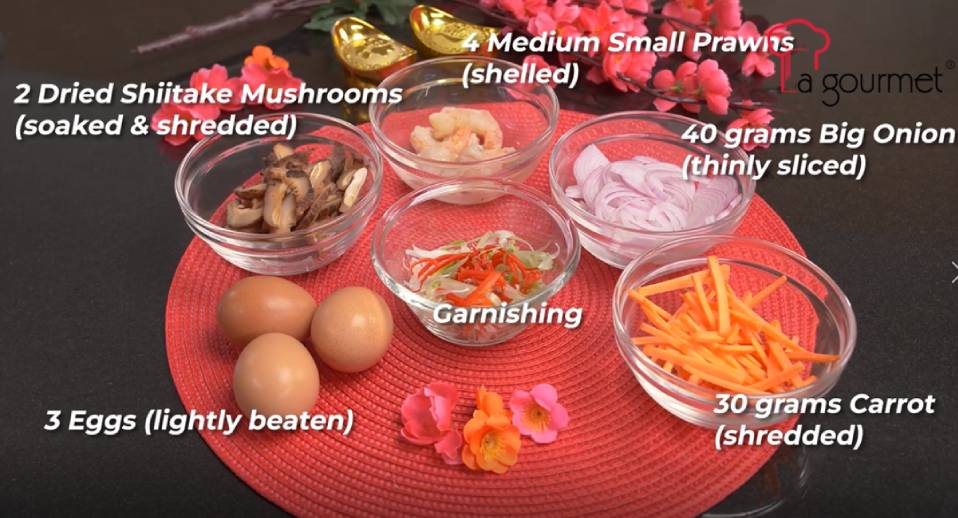
- 3 bundles of flour vermicelli (mee sua)
- 2 cups cooking oil (for deep-frying)
- 1 tbsp sesame oil
- 1 tsp chopped garlic
- 1 tsp ginger
- 3 eggs (lightly beaten)
Ingredients A:
- 4 medium small prawns (shelled)
- 2 dried shiitake mushrooms (soaked & shredded)
- 30 grams carrot (shredded)
- 40 grams big onion (thinly sliced)
- 60 grams cabbage (thinly cut)
- 40 grams beansprouts
Seasoning:

- 1 tbsp light soy sauce
- 1 tbsp oyster sauce
- 1/4 tsp dark soy sauce
- 1/2 tsp sugar
- 3/4 tsp chicken stock powder
- 1/2 tsp pepper
- 1/2 cup water
- A splash of Shaoxing wine (optional)
- pinch of salt
Garnishing

- Spring onion & coriander leaves (chopped)
- Red chilli curls
- Adequately toasted sesame seeds
Directions for this Longevity Noodles recipe:
1. Prepare hot boiling water in a bowl. Fill it just enough to soak all the noodles.
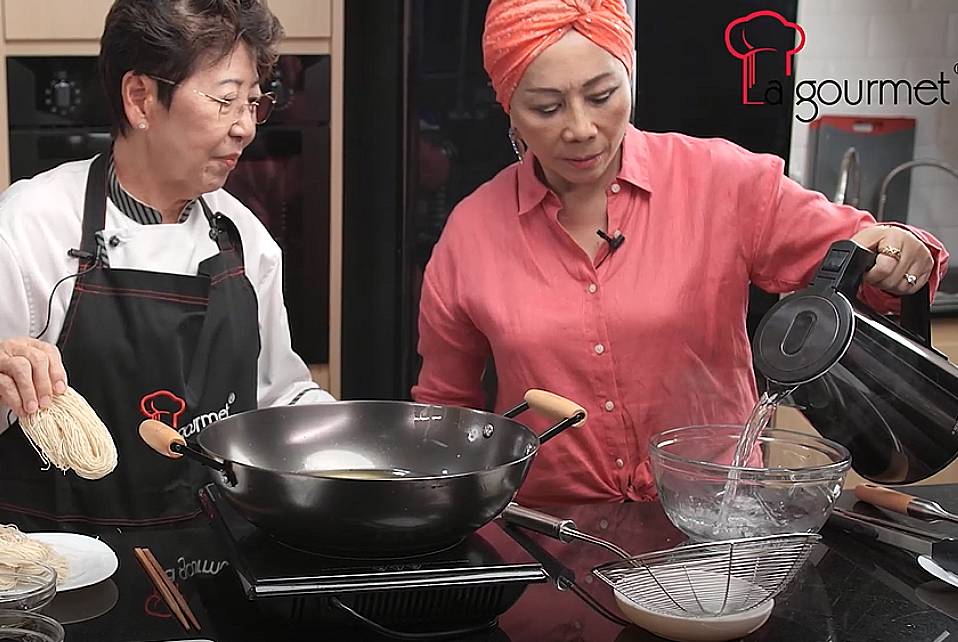
2. Fry the vermicelli noodles for a while until it turns golden brown.

3. Transfer the fried vermicelli into the hot water. Let it soak. This will remove the oil from the vermicelli noodle. Let it sit a while until it softens.




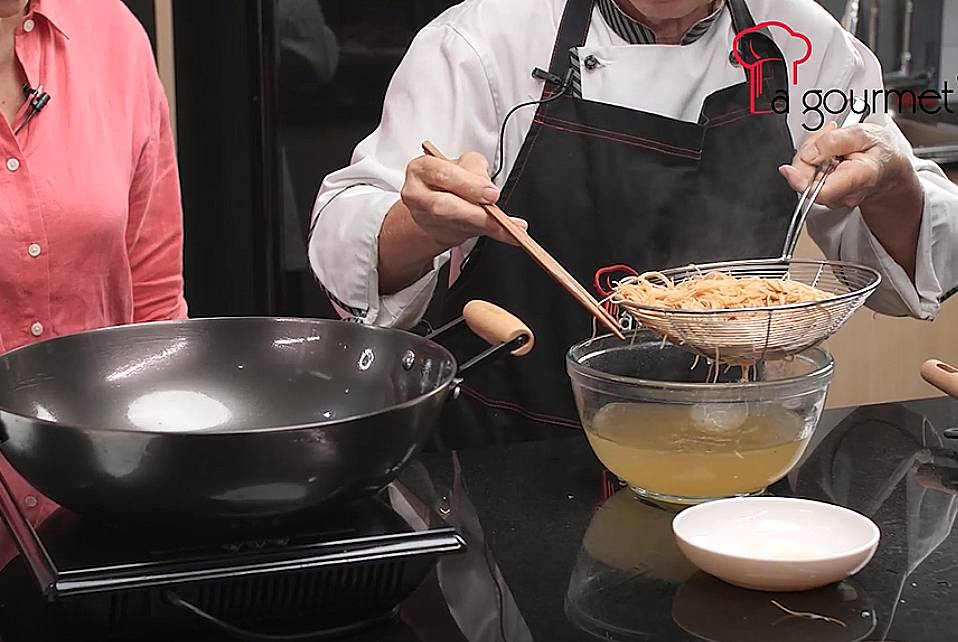
4. Once the vermicelli noodle softens, let it drip dry.
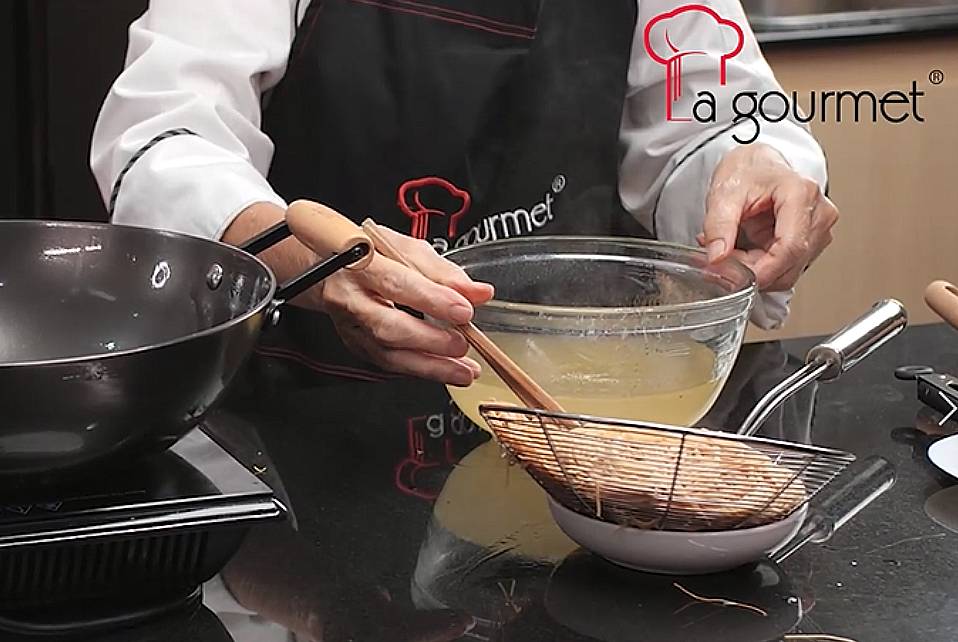
5. Now, let’s prepare the sauce. Mix dark soy sauce, oyster sauce, Shaoxing wine and light soy sauce. Then, add a little bit of hot water and stir. Add in a bit of salt, chicken stock powder, sugar and a dash of pepper and stir.


6. Next, break 3 eggs into a bowl. Lightly beat up the egg.

7. Put some sesame oil into the wok. Add some garlic, chopped ginger, mushrooms, prawns, carrots and onions. Then, stir fry.

8. Push those ingredients to the side, then add in the eggs. Scramble the egg.

9. Add in the mee sua into the wok and toss it.

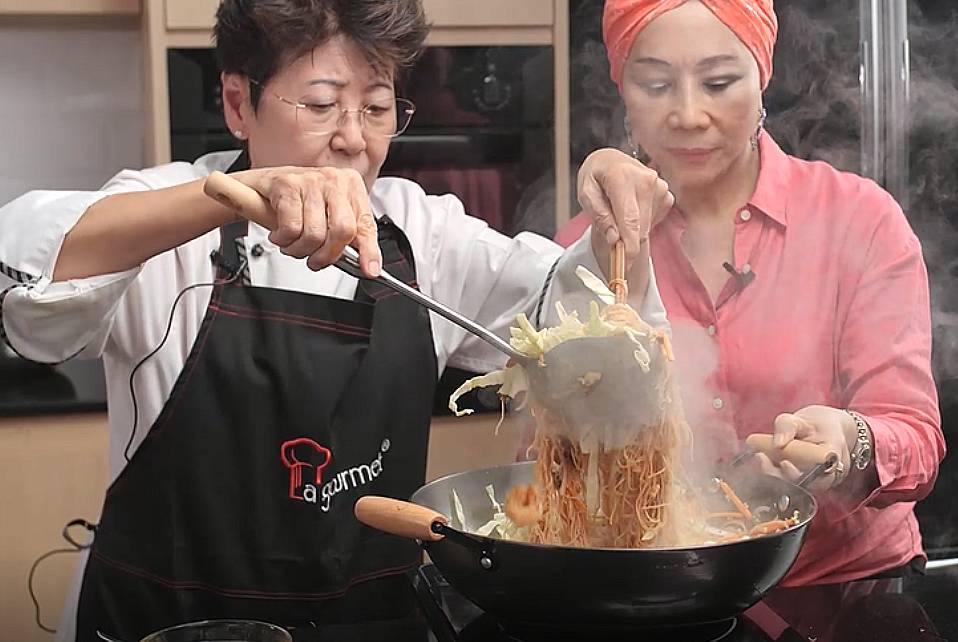
10. Add in the remaining sauce.
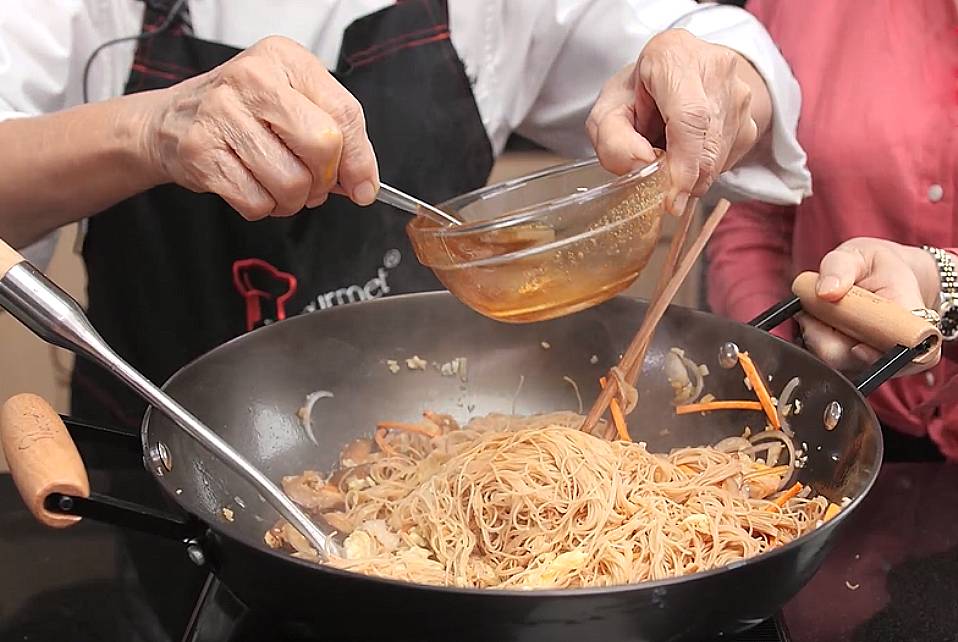
11. Put the cabbage in and stir fry again.


12. Pour a little bit of water before adding the beansprouts.
13. The Longevity Noodles is done and ready to serve!


Why are they called longevity noodles?
In China, the Han people follow the custom of eating longevity noodles on their birthday.
In Chinese, the person “面” in a real sense implies noodle as well as face.
The Chinese Emperor Wu accepted that individuals with long appearances for the most part lived longer. The more extended the face, the longer the life someone will have. Since Emperor Wu, long noodles have been utilized as an analogy for life span and as a gift for birthday festivities.
The custom has been followed from that point onward. A life span noodle is a solitary noodle that fills the entire bowl, and it is better not to break it while eating.
Traditions of longevity noodles
There are a few traditions related to eating longevity noodles. One of them asks that visitors pick their noodles from their own bowl and spot them into the bowl of the individual commending his birthday as they wish them a fortune, joy, and life span.
Another custom is to hold the noodles up with your chopsticks and consider how long they are with your guests.
Likewise, never fill noodles to the edge of a bowl, as it would imply that you are demonstrating a full life expectancy.
However, the one thing that is an outright no-no is to cut a strand of noodle as you would be in danger of stopping your life expectancy!
There are a large number of longevity noodles recipes. Most frequently, they are ready with pork, chicken, or simply Chinese chive and shiitake mushrooms.
What type of noodles to use for longevity noodles recipe?
The long noodles address a long life, cutting the noodles emblematically reduce your life. So, it’s about using long noodles. Not just any long noodles, it has to be tough and not that easily break yet maintains that edible texture.
In this recipe, we’re using mee sua. Another more popular choice is the use of yi mein.
Yi Mein, is a Cantonese egg noodle comprised of wheat flour. While making the mixture, soft drink water is utilized rather than plain old water so the noodle surface is somewhat chewy, fairly supple, and absolutely cracking magnificent.
They’re permeable noodles, so they retain a portion of the sauce you use to make things considerably more enchanted. Try to get great quality noodles; it has *all* the texture.
They’ll keep up with their versatility in the wake of being boiled and sautéed, and that permits them to extend and remain scrum-diddly-umptious! That’s what makes yi mien a popular choice for this recipe.
Hope this post has been informative and makes you hungry! For the best cookware to get that wok hei, use a cast iron wok such as Nitrigan Cast Iron Wok from La gourmet.
Nitrigan Cast Iron Wok is manufactured with nitriding process to make it tougher and highly-resistant against rust. As you season and use it, it gets better as it goes!
When well taken care of, you can also pass it on to your younger generation. It’s that durable!
Drop by our website for ongoing cookware sales and offers!

